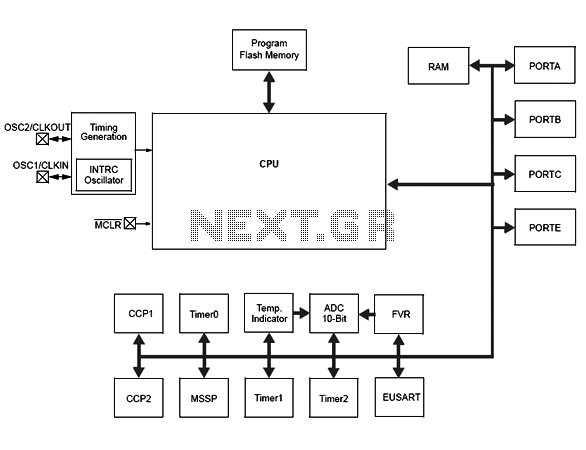
led blinking program with 8051 microcontroller

The first "Hello World!" project preferred for microcontrollers is LED blinking. An ATMEL 89C51 (40-pins DIP) microcontroller, based on the 8051 architecture, is used, which is ideal for first-time learning of MCU chips. The program is very simple and straightforward, utilizing a delay procedure loop based on software delay. Source code is available.
The LED blinking project serves as an introductory exercise for understanding microcontroller operations, particularly in the context of the ATMEL 89C51 microcontroller. This microcontroller features a 40-pin dual in-line package (DIP) and is known for its ease of use, making it suitable for beginners.
The circuit typically consists of the microcontroller, an LED, a current-limiting resistor, and a power supply. The LED is connected to one of the microcontroller's output pins (often port 1 or port 2), while the current-limiting resistor is placed in series with the LED to prevent excessive current that could damage the LED. The power supply usually provides a voltage of 5V, which is the standard operating voltage for the 89C51.
The software code for this project involves initializing the microcontroller, configuring the appropriate I/O ports, and implementing a delay function. The delay function can be created using a simple loop that counts to a certain value, effectively creating a pause in the program execution. This allows the LED to turn on and off at regular intervals, creating a blinking effect.
The program flow begins with the initialization of the microcontroller's registers and ports. The output pin connected to the LED is set to high to turn the LED on, followed by a call to the delay function. After the delay, the output pin is set to low to turn the LED off, and the delay function is called again. This cycle repeats indefinitely, resulting in a blinking LED.
This project not only demonstrates the fundamental concepts of microcontroller programming but also provides practical experience in circuit assembly and debugging. By completing this project, users gain valuable insights into the operation of microcontrollers and the basics of embedded systems design.The first “Hello World!†project I prefer for Microcontroller is LED Blinking. I have used ATMEL s 89C51 (40-pins DIP) 8051 architecture microcontroller which is ideal for first time learning MCU Chip. The program is very simple and straight forward, that uses a delay procedure loop based software delay. Source Code Here,i have written code in.. 🔗 External reference
The LED blinking project serves as an introductory exercise for understanding microcontroller operations, particularly in the context of the ATMEL 89C51 microcontroller. This microcontroller features a 40-pin dual in-line package (DIP) and is known for its ease of use, making it suitable for beginners.
The circuit typically consists of the microcontroller, an LED, a current-limiting resistor, and a power supply. The LED is connected to one of the microcontroller's output pins (often port 1 or port 2), while the current-limiting resistor is placed in series with the LED to prevent excessive current that could damage the LED. The power supply usually provides a voltage of 5V, which is the standard operating voltage for the 89C51.
The software code for this project involves initializing the microcontroller, configuring the appropriate I/O ports, and implementing a delay function. The delay function can be created using a simple loop that counts to a certain value, effectively creating a pause in the program execution. This allows the LED to turn on and off at regular intervals, creating a blinking effect.
The program flow begins with the initialization of the microcontroller's registers and ports. The output pin connected to the LED is set to high to turn the LED on, followed by a call to the delay function. After the delay, the output pin is set to low to turn the LED off, and the delay function is called again. This cycle repeats indefinitely, resulting in a blinking LED.
This project not only demonstrates the fundamental concepts of microcontroller programming but also provides practical experience in circuit assembly and debugging. By completing this project, users gain valuable insights into the operation of microcontrollers and the basics of embedded systems design.The first “Hello World!†project I prefer for Microcontroller is LED Blinking. I have used ATMEL s 89C51 (40-pins DIP) 8051 architecture microcontroller which is ideal for first time learning MCU Chip. The program is very simple and straight forward, that uses a delay procedure loop based software delay. Source Code Here,i have written code in.. 🔗 External reference





